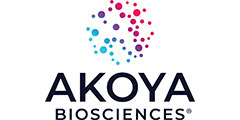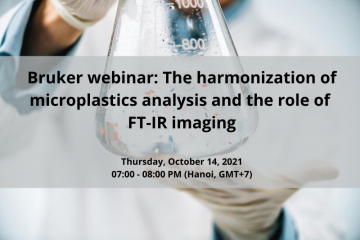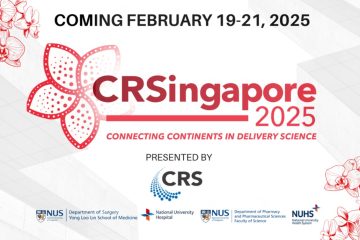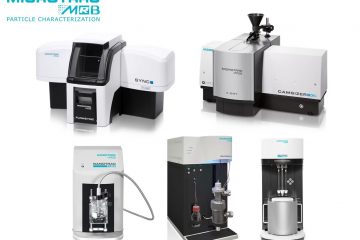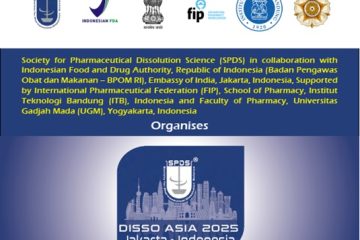Akoya webinar: Tổng quan về phân tích Single cell bằng công nghệ đồng phát hiện mã vạch CODEX
09/06/2021Công nghệ đồng phát hiện bằng mã vạch CODEX (Co-Detection by indEXing) được phát triển dựa trên kết quả nghiên cứu từ phòng lab của Tiến sĩ Garry Nolan tại Đại học Stanford, công nghệ này sử dụng các kháng thể liên hợp với các trình tự oligonucleotide đặc hiệu gọi là bộ mã vạch (CODEX-Barcodes). Công nghệ này cho phép phân tích lên đến hơn 40 dấu ấn miễn dịch trên cùng một phản ứng nhuộm mô duy nhất.
Các ưu điểm của công nghệ CODEX:
– Cung cấp đầy đủ bối cảnh không gian mẫu và không chỉ giới hạn ở các vùng quan tâm (ROI – regions of interest).
– Cung cấp độ phân giải đến từng tế bào đơn đến 600 nm hoặc 250 nm tùy thuộc vật kính kính hiển vi sử dụng (20X và 40X, tương ứng).
– Nhuộm 1 bước và nhẹ nhàng loại bỏ fluorophore giúp bảo quản mẫu cho phân tích ROI.
Webinar: “Tổng quan về phân tích Single cell bằng công nghệ đồng phát hiện mã vạch CODEX” sẽ cung cấp cho bạn một cái nhìn tổng quan về công nghệ, cũng như chi tiết về các ứng dụng có thể có của phương pháp này. Chương trình cho hội thảo cụ thế như sau:
|
Người thuyết trình |
Nội dung |
Thời lượng |
|
Paul McMillan (PMCC) |
Welcome |
5 mins |
|
Grady Carlson (Akoya) |
Introduction to CODEX |
15 mins |
|
Oliver Braubach (Akoya) |
Overview of Single Cell CODEX Applications |
15 mins |
|
James Wilmott (Sydney) |
Application of CODEX to Melanoma research |
15 mins |
|
Paul McMillan (PMCC) |
Questions & closing |
10 mins |
Thông tin chi tiết:
Thời gian: 17/6/2021, 08:00 sáng (GMT+7, Hanoi)
Link brochure: CODEX workshop flyer
Quý khách vui lòng đăng ký bên dưới.
Speakers Profile

Title: An Overview of Single Cell CODEX Applications
Oliver Braubach, Ph.D.
Senior Manager, Applications
Akoya Biosciences
Oliver Braubach received his doctorate from Dalhousie University in 2011. He then completed postdoctoral appointments at Yale and the Korea Institute of Science and Technology. During this time, he used state-of-the-art optical imaging and optogenetic technologies to investigate the structure and function of the brain. Oliver’s most recent academic appointment was at Cedars-Sinai where he conducted research in line with his background in optical imaging. It was during this time that Oliver started to use the CODEX® System and that he decided to pursue his interest in highly-multiplexed imaging by joining Akoya. As Manager of our Applications Team, he has been pushing our CODEX and Phenoptics technologies into new scientific frontiers

Introduction to CODEX
Grady Carlson, Ph.D.
BioInformatics Field Application Scientist
Akoya Biosciences
Grady is a bioinformatics field application scientist supporting CODEX image analysis. Grady joined Akoya in 2018 through the acquisition of PerkinElmer’s Quantitative Pathology Solutions. Prior to joining PerkinElmer, Grady was a postdoc at the Baylor College of Medicine. He is based in the bay area of California.

Application of CODEX to Melanoma research
James Wilmott
NHMRC Investigator Fellow
The University of Sydney
Senior lecturer James Wilmott is the research leader of the Translational Melanoma Research Group of the Melanoma Institute Australia, The University of Sydney. Dr Wilmott is a current holder of an NHMRC early career fellowship and received his PhD in 2013 from the University of Sydney. Dr Wilmott is recognised internationally as an emerging expert in clinical implications of genomic profiles (First author Nature and Int J Cancer), immune profiling of cancer tissue (Co-author in Nature, The Lancet Oncology, senior author in Clinical Cancer Research and Oncoimmunology) and in biomarkers of response of systemic therapies (Senior author Cancer Cell).

